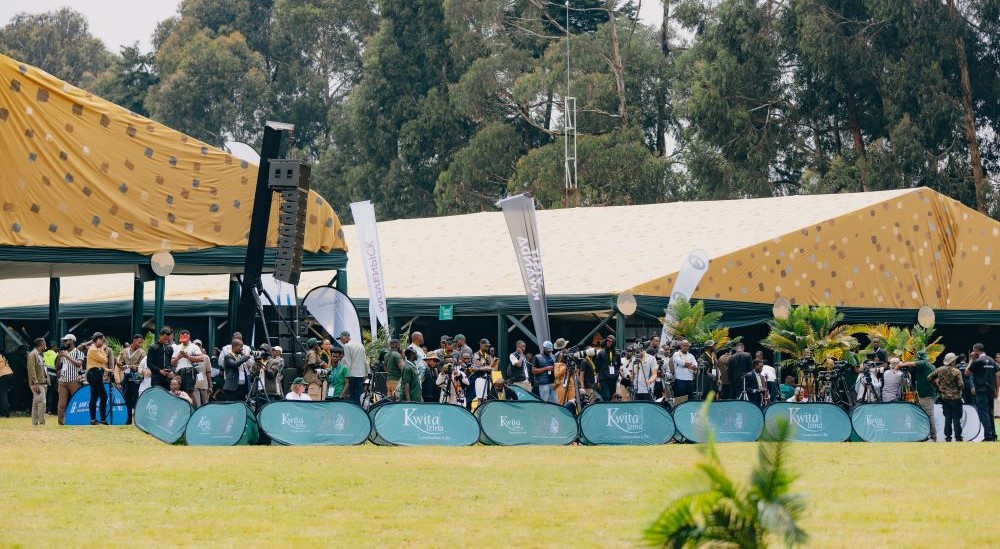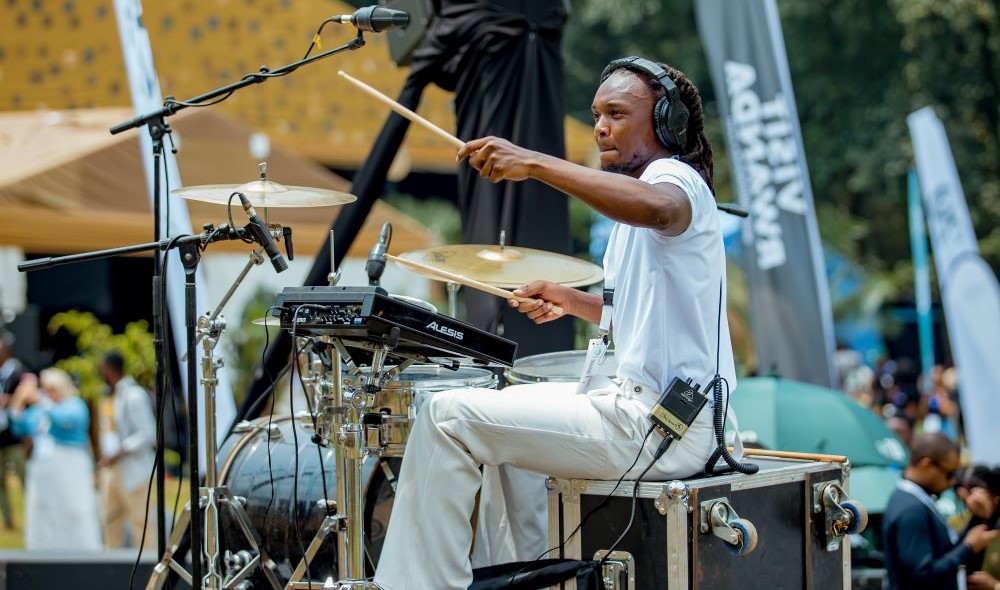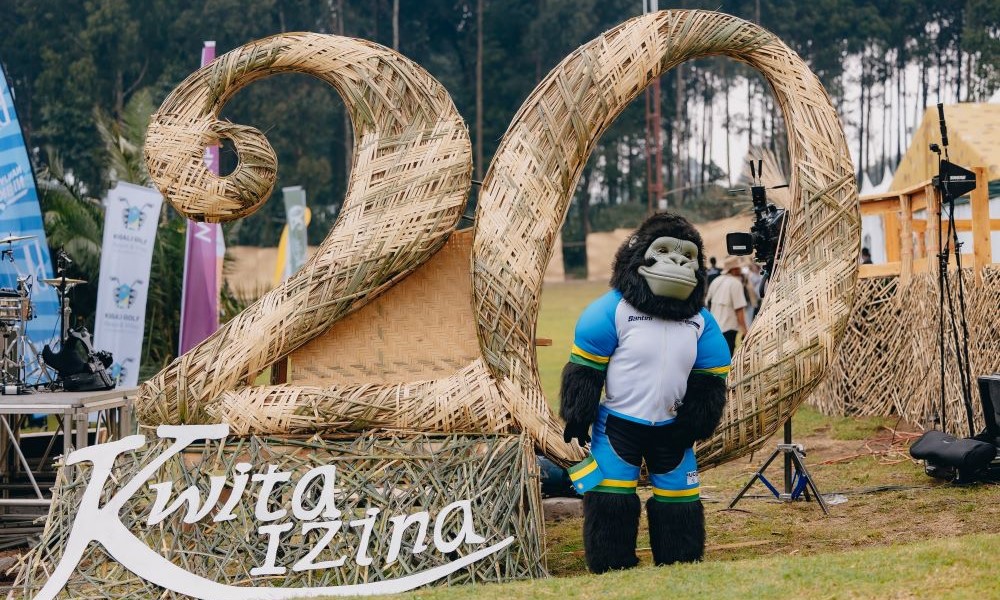The dawn mist lifted gently off the volcanoes in Rwanda’s Musanze district in Northern province, as though the mountains themselves were exhaling.
Karisimbi’s snow-dusted shoulders shimmered, Bisoke stood tall, and Sabyinyo stretched into the sky, their outlines softened by the silver light of morning. Along the winding roads toward Kinigi, schoolchildren in neatly pressed sweaters pointed excitedly toward the grand stage rising against the backdrop of Volcanoes National Park.
Traditional drummers tightened the skins of their drums, dancers adjusted their elaborate headdresses, and the hum of expectation filled the crisp mountain air.
The atmosphere in Kinigi was electric yet serene, like a heartbeat in rhythm with the mountains. Rows of seats filled quickly with local villagers, conservationists, government officials, and international visitors.
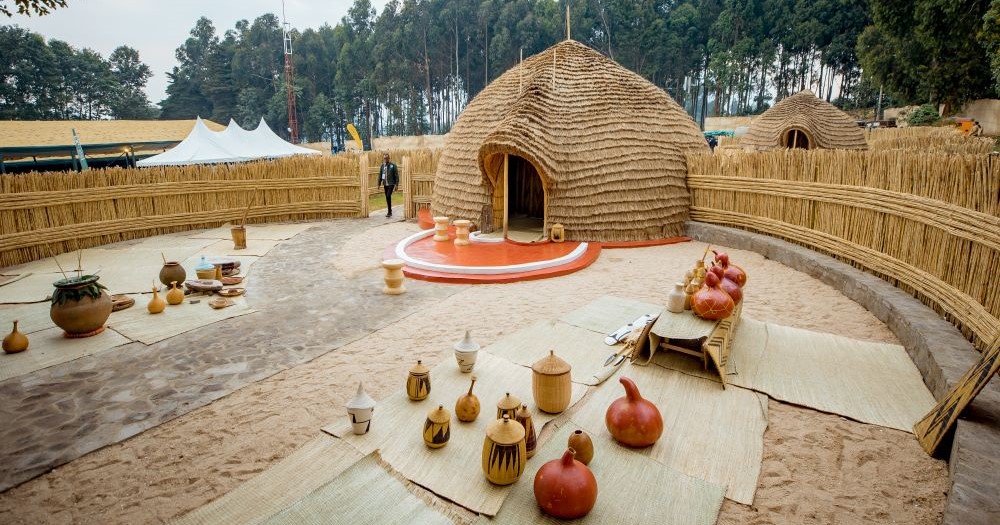
The stage shimmered under the morning sun, draped in green and gold to mirror the surrounding landscape. At the center, a tricolored flag fluttered softly, awaiting the anthem that would soon be sung.
As the ceremony began, two energetic Masters of Ceremony—switching seamlessly between Kinyarwanda, English, and French—invited the crowd to rise. Together, thousands of voices, carried by a brass band and traditional singers, lifted Rwanda’s National Anthem into the morning air.
For a moment, the volcanoes themselves seemed to stand taller, echoing the solemn pride of a nation that has tied its destiny to protecting nature.
This year’s Kwita Izina carried even greater weight, as it was graced by two towering figures of Rwanda’s leadership. The First Lady, Jeannette Kagame, arrived with her characteristic grace and warmth, her presence a testament to her enduring support for Rwanda’s conservation and community upliftment.
Alongside her, the Guest of Honour, Prime Minister Dr. Justin Nsengiyumva, stood as a symbol of national commitment to protecting the environment and preserving Rwanda’s natural treasures.
Their arrival was greeted with ululations, applause, and the steady beat of drums, as if the community itself was offering a collective blessing. The Prime Minister, addressing the crowd later, reminded Rwandans that gorillas are not just an emblem of tourism but ambassadors of Rwanda’s identity—living proof that sustainable development and cultural heritage can walk hand in hand.
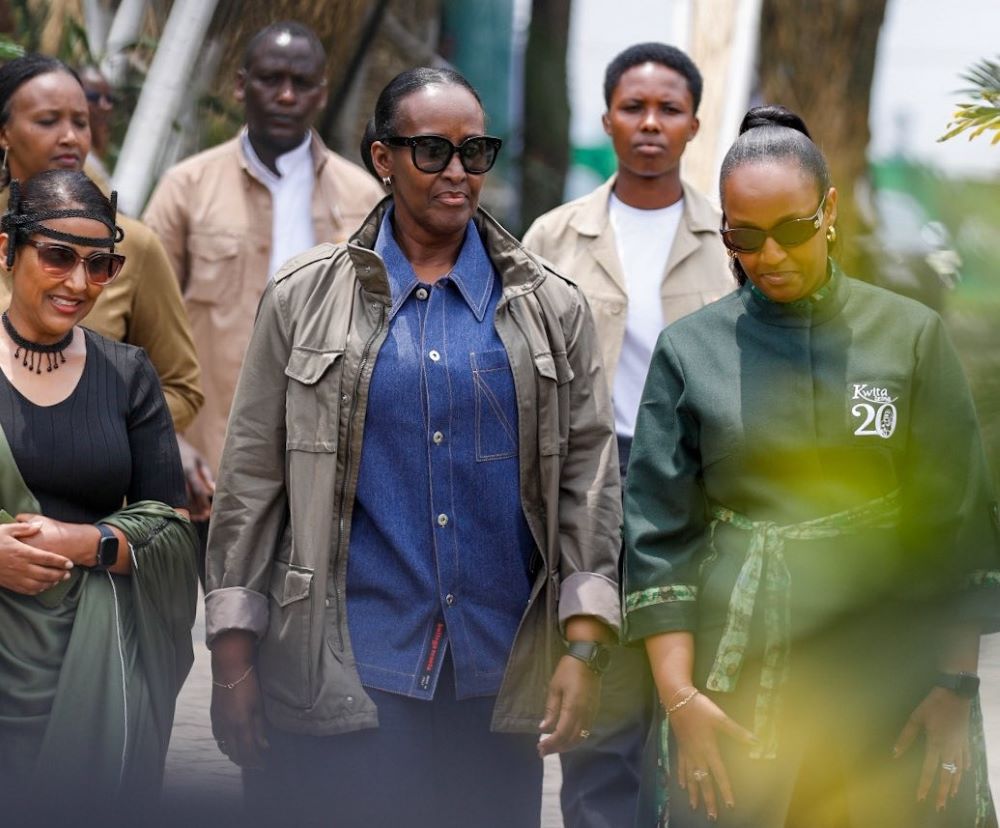
A tradition with deep roots
Kwita Izina, meaning “to give a name” in Kinyarwanda, echoes an age-old practice in Rwandan culture where families gather to name their children with hopes, blessings, and expectations woven into the words. By extending this tradition to gorillas, Rwanda has turned a cultural heartbeat into a conservation tool. Every gorilla named becomes part of a story—a symbol of survival, community, and shared responsibility.
Since the official launch of Kwita Izina in 2005, nearly 400 gorillas have been named. Each name, often drawn from themes of resilience, heritage, peace, or sustainability, immortalizes a chapter in the lives of these gentle giants. It is a ritual that connects Rwanda’s past to its present, culture to science, and community to global conservation.
Kinigi’s vibrant Festival
On the festival grounds in Kinigi, cultures intertwined. Women in brightly patterned imishanana greeted park rangers dressed in forest-green uniforms. Conservationists rubbed shoulders with musicians and filmmakers, while local artisans displayed woven baskets made from native grasses. Among the distinguished guests were international figures who had come to lend their voices to this cause.
Nigerian Afropop superstar Yemi Alade, radiant and poised, stood ready to name one of the young gorillas, her presence a symbol of how far Kwita Izina’s message has traveled across continents.
The energy was infectious. Intore dancers stamped their feet, spears flashing under the sun. Singers’ ululations echoed across the terraces, startling a few birds into the air. Children’s laughter mingled with the rhythm of drums. Yet through all the spectacle, the mountains stood firm in the background—silent witnesses to this communion between people and nature.
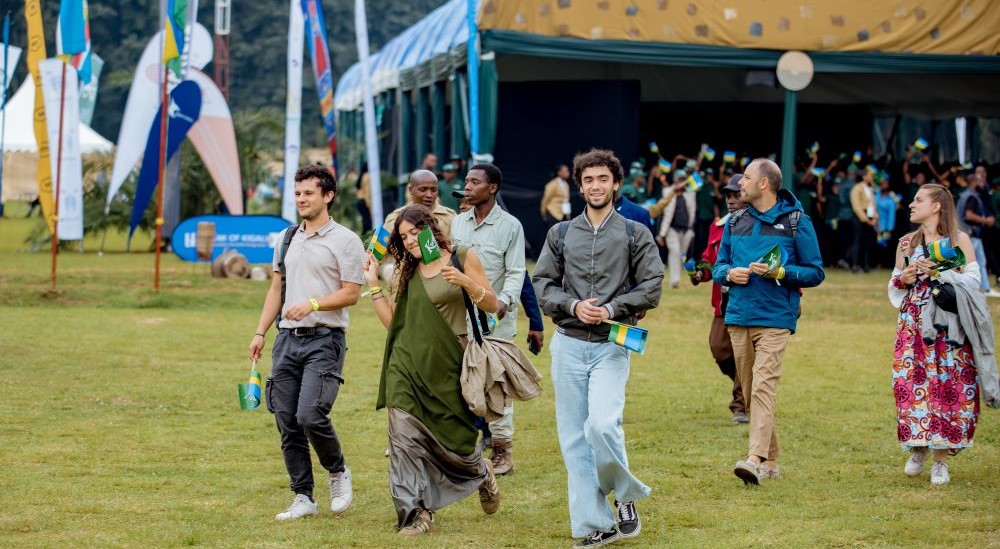
The power of a name
Beyond the color and pageantry, the names have a crucial purpose. Practically, they allow researchers and rangers to track the lives of gorillas—who mothers whom, how families evolve, when groups split or merge. Spiritually, names weave gorillas into the human community, creating bonds of care and accountability.
This connection has borne fruit. Just a few decades ago, mountain gorillas teetered on the brink of extinction. Their global population had dwindled to a few hundred in the 1980s. Today, thanks to tireless conservation efforts, vigilant veterinary care, and community partnerships, their numbers have risen to about 1,063 individuals. Rwanda’s Volcanoes National Park is at the heart of this success story, showing the world that endangered species can be saved when human commitment aligns with nature’s resilience.
Communities at the core
The real guardians of Volcanoes National Park live in the villages that border it. Rwanda’s pioneering revenue-sharing policy allocates 10% of park tourism revenues to local communities, funding schools, health centers, water projects, and small businesses. This ensures that conservation is not seen as a burden but as a shared blessing.
In Kinigi, and surrounding sectors, the benefits are visible: a new primary school built from tourism funds, boreholes supplying clean water to families, cooperatives supporting women artisans, and improved roads connecting farmers to markets. The prosperity generated by each gorilla permit—among the most sought-after experiences in global tourism—flows directly into the lives of farmers, teachers, and families who live alongside the park.
You could see this truth reflected in the eyes of the people gathered in Kinigi. A woman from a local cooperative watched the stage, knowing that a healthy gorilla population helps pay for her children’s schooling.
A ranger, boots still dusty from morning patrol, smiled as a baby gorilla received a name symbolizing perseverance. Veterinarians and researchers exchanged nods, proud of the lives saved from snares or disease. The community’s bond with the gorillas is no longer symbolic; it is lived and tangible.
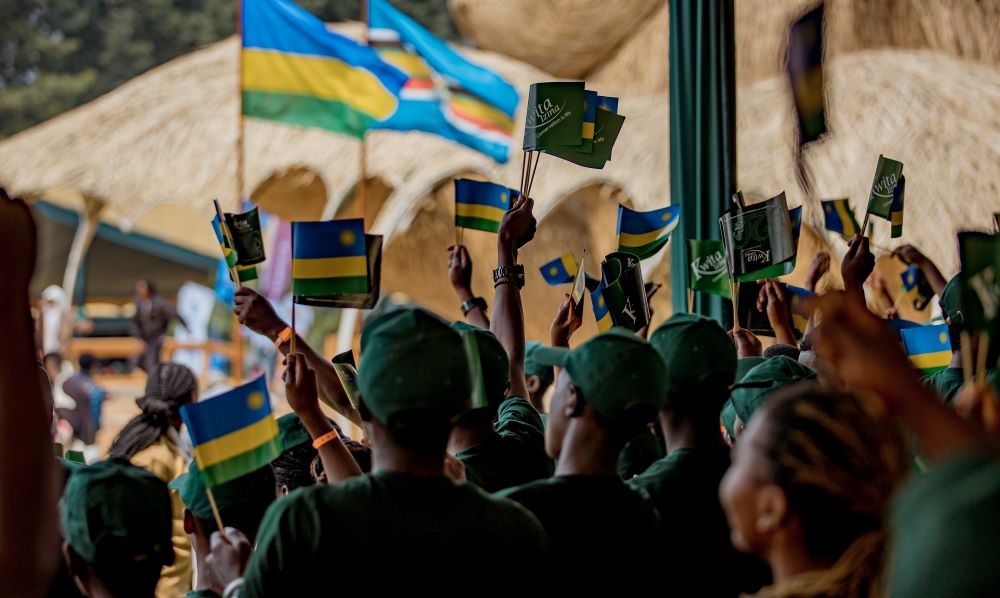
A ceremony of continuity
The Prime Minister’s speech struck a note of vision, while the First Lady’s presence reinforced the idea that Kwita Izina is not just tradition—it is an institution, a policy, and a promise renewed every year. Together, they placed gorilla conservation firmly at the heart of Rwanda’s national agenda, a beacon for Africa and the world.
After the postponement of last year’s ceremony, this 20th edition carried renewed vitality. The Rwanda Development Board wove the naming into a week-long celebration that included conservation dialogues, tourism exhibitions, and community activities. Rwanda once again affirmed its rhythm: conserve, benefit, celebrate, repeat.
The emotional weight of the moment
When Yemi Alade took the stage to name her gorilla infant, the crowd’s anticipation surged. She pronounced the chosen Kinyarwanda name with care, her voice rising like a song across the highlands. Though the infant itself remained in the forest, nestled in bamboo groves and under the watchful eyes of its family, the name bridged worlds.
It traveled from the stage to the trackers’ logbooks, to the whispered observations of researchers, to the hearts of the Rwandans present—and ultimately to the very forest floor where the gorilla would grow.
Each name given that day became a vow, a reminder that conservation is never finished but renewed every dawn.
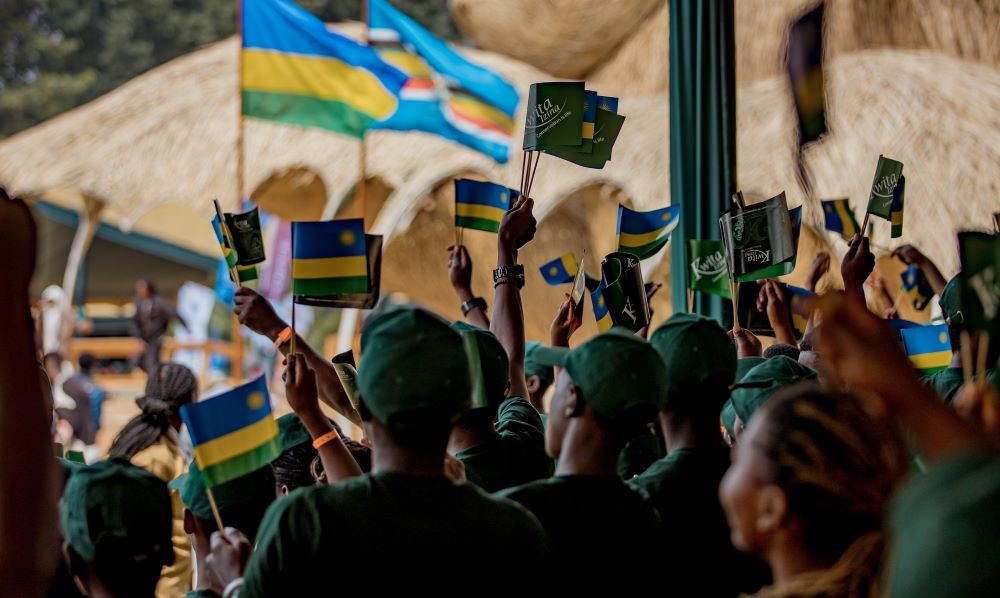
Nature’s silent applause
By afternoon, the mist had lifted entirely, revealing the lush slopes of the volcanoes. The crowd slowly dispersed, carrying with them the joy of the day. Yet the mountains seemed closer, as if drawn by the words and songs spoken in their honor.
In Musanze town, hotels buzzed with guests and tour operators making plans. Rwanda’s “low-volume, high-value” tourism model, built on careful stewardship of gorilla trekking, continues to power the economy while protecting the animals that make it possible.
A single gorilla, scientists estimate, can generate millions of dollars over its lifetime. But no number, however staggering, captures the quiet awe of standing in the forest and realizing you are face to face with family. For in the end, that is what the gorillas remind us: that we share this earth not just with one another but with kin whose survival is inseparable.
